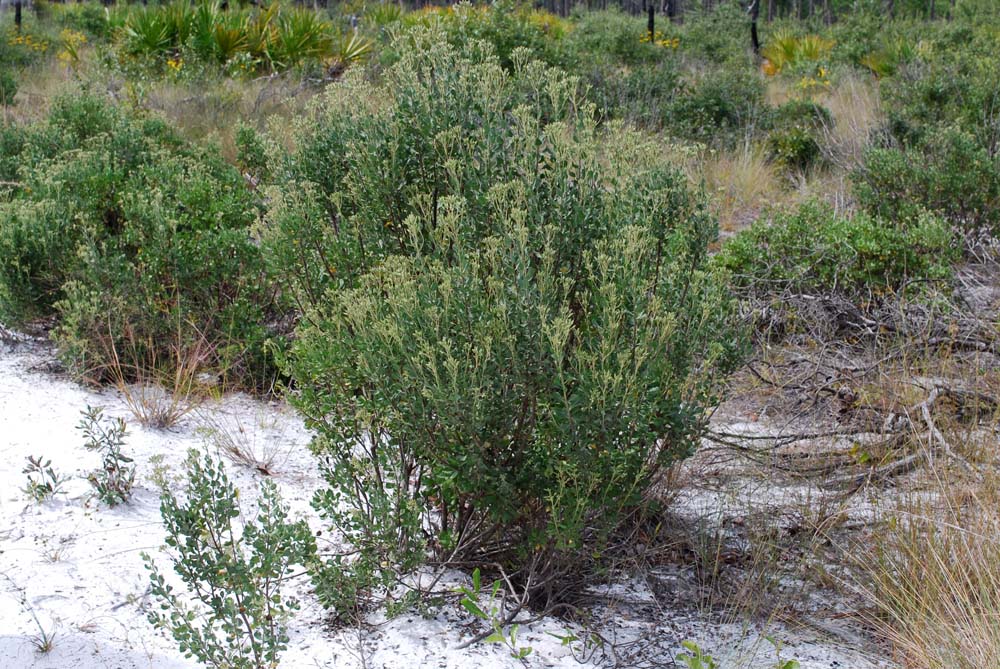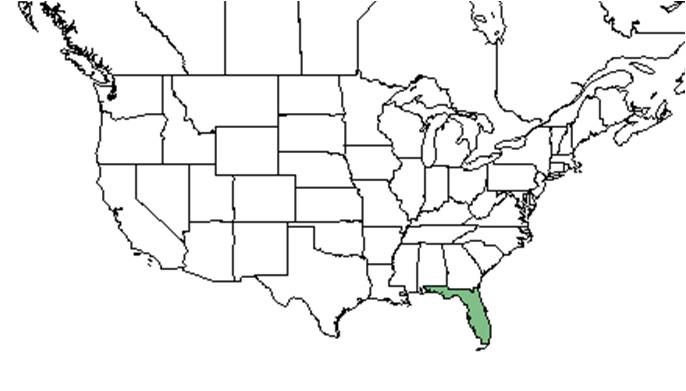Difference between revisions of "Garberia heterophylla"
Krobertson (talk | contribs) (→Pollination) |
|||
| Line 43: | Line 43: | ||
===Pollination=== | ===Pollination=== | ||
The following Hymenoptera families and species were observed visiting flowers of ''Garberia heterophylla'' at Archbold Biological Station: <ref name="Deyrup 2015">Deyrup, M.A. and N.D. 2015. Database of observations of Hymenoptera visitations to flowers of plants on Archbold Biological Station, Florida, USA.</ref> | The following Hymenoptera families and species were observed visiting flowers of ''Garberia heterophylla'' at Archbold Biological Station: <ref name="Deyrup 2015">Deyrup, M.A. and N.D. 2015. Database of observations of Hymenoptera visitations to flowers of plants on Archbold Biological Station, Florida, USA.</ref> | ||
| − | |||
Apidae: ''Bombus impatiens, Epeolus carolinus'' | Apidae: ''Bombus impatiens, Epeolus carolinus'' | ||
| Line 56: | Line 55: | ||
Vespidae: ''Monobia quadridens, Pachodynerus erynnis, Stenodynerus fundatiformis, Zethus slossonae, Zethus spinipes'' | Vespidae: ''Monobia quadridens, Pachodynerus erynnis, Stenodynerus fundatiformis, Zethus slossonae, Zethus spinipes'' | ||
| + | |||
| + | Visited by ''Calycopis cecrops'' (red-banded hairstreak) in scrubby flatwoods along a short, relatively steep ecotone between ''Pinus clausa'' scrub and a ''Pinus densa'' savanna in northern Highlands County, Nov 28, 2016.<ref>Edwin Bridges, observation and photo posted to the Florida Flora and Ecosystematics Facebook Group.</ref> | ||
<!--===Use by animals===--> <!--Herbivory, granivory, insect hosting, etc.--> | <!--===Use by animals===--> <!--Herbivory, granivory, insect hosting, etc.--> | ||
<!--===Diseases and parasites===--> | <!--===Diseases and parasites===--> | ||
| + | |||
==Conservation and management== | ==Conservation and management== | ||
Revision as of 13:33, 2 December 2016
| Garberia heterophylla | |
|---|---|

| |
| Photo by Wayne Matchett, SpaceCoastWildflowers.com | |
| Scientific classification | |
| Kingdom: | Plantae |
| Division: | Magnoliophyta - Flowering plants |
| Class: | Magnoliopsida - Dicotyledons |
| Order: | Asterales |
| Family: | Asteraceae ⁄ Compositae |
| Genus: | Garberia |
| Species: | G. heterophylla |
| Binomial name | |
| Garberia heterophylla (W. Bartram) Merr. & F. Harper | |

| |
| Natural range of Garberia heterophylla from USDA NRCS Plants Database. | |
Common name: Garberia
Contents
Taxonomic notes
Synonym: Garberia fruticosa (Nuttall) A. Gray
Description
A description of Garberia heterophylla is provided in The Flora of North America.
G. heterophylla is a perennial species that reaches a height of 4 to 8 feet. The obovate leaves are alternately on the vertical stem.[1]
Distribution
It is native to Florida.[1]
Ecology
Habitat
In the Coastal Plain in Florida, G. heterophylla occurs in sand pine-oak scrub ridges. [2] Associated species includes Quercus virginiana and Pinus clausa. [2]
Phenology
Fruits November through December and flowers October through December. [2]
Seed dispersal
Seeds are dispersed by wind. [3]
Seed bank and germination
Smoke does not stimulate germination. [4]
Fire ecology
Carrington (1999) found G. heterophylla to be a strong resprouter post-fire, with a high percentage of individuals flowering. This study also found seedlings were established between 4 to 16 months post fire. This contradicts Weekley and Menges (2003), who found that survival was lower for burned individuals than for unburned individuals, suggesting G. heterophylla was a weak resprouter.
Pollination
The following Hymenoptera families and species were observed visiting flowers of Garberia heterophylla at Archbold Biological Station: [5]
Apidae: Bombus impatiens, Epeolus carolinus
Colletidae: Colletes mandibularis
Halictidae: Agapostemon splendens, Augochlora pura, Augochlorella aurata, Augochloropsis metallica, Lasioglossum miniatulus, L. nymphalis, L. placidensis, Sphecodes heraclei
Megachilidae: Anthidiellum notatum rufomaculatum, Coelioxys sayi, Megachile albitarsis, M. mendica, M. pruina, M. xylocopoides
Sphecidae: Cerceris flavofasciata floridensis, Eremnophila aureonotata
Vespidae: Monobia quadridens, Pachodynerus erynnis, Stenodynerus fundatiformis, Zethus slossonae, Zethus spinipes
Visited by Calycopis cecrops (red-banded hairstreak) in scrubby flatwoods along a short, relatively steep ecotone between Pinus clausa scrub and a Pinus densa savanna in northern Highlands County, Nov 28, 2016.[6]
Conservation and management
Cultivation and restoration
Photo Gallery
Flowers of Garberia heterophylla Photo by Wayne Matchett, SpaceCoastWildflowers.com
References and notes
Weekley, Carl W., and Eric S. Menges. “Species and Vegetation Responses to Prescribed Fire in a Long-unburned, Endemic-rich Lake Wales Ridge Scrub”. Journal of the Torrey Botanical Society 130.4 (2003): 265–282.
- ↑ 1.0 1.1 [[1]] Accessed: December 11, 2015
- ↑ 2.0 2.1 2.2 Florida State University Robert K. Godfrey Herbarium database. URL: http://herbarium.bio.fsu.edu. Last accessed: October 2015. Collectors: Loran C. Anderson, D. Burch, Colette Burger, William B. Fox, Angus Gholson, R.K. Godfrey, Chuck Hess, Richard D. Houk, O. Lakela, S.W. Leonard, K.M. Meyer, Elmer C. Prichard, A.G. Shuey, Victoria I. Sullivan, Robert F. Thorne, A. Townesmith,D.B. Ward, Erdman West. States and Counties: Florida: Lake, Manatee, Marion, Highlands, Hillsborough, Pinellas, Putnam, Volusia. Compiled by Tall Timbers Research Station and Land Conservancy.
- ↑ Carrington, M. E. (1999). "Post-fire seedling establishment in Florida sand pine scrub." Journal of Vegetation Science 10(3): 403-412.
- ↑ Lindon, H. L. and E. Menges (2008). "Scientific note: effects of smoke on seed germination of twenty species of fire-prone habitats in Florida." Castanea 73: 106-110.
- ↑ Deyrup, M.A. and N.D. 2015. Database of observations of Hymenoptera visitations to flowers of plants on Archbold Biological Station, Florida, USA.
- ↑ Edwin Bridges, observation and photo posted to the Florida Flora and Ecosystematics Facebook Group.
